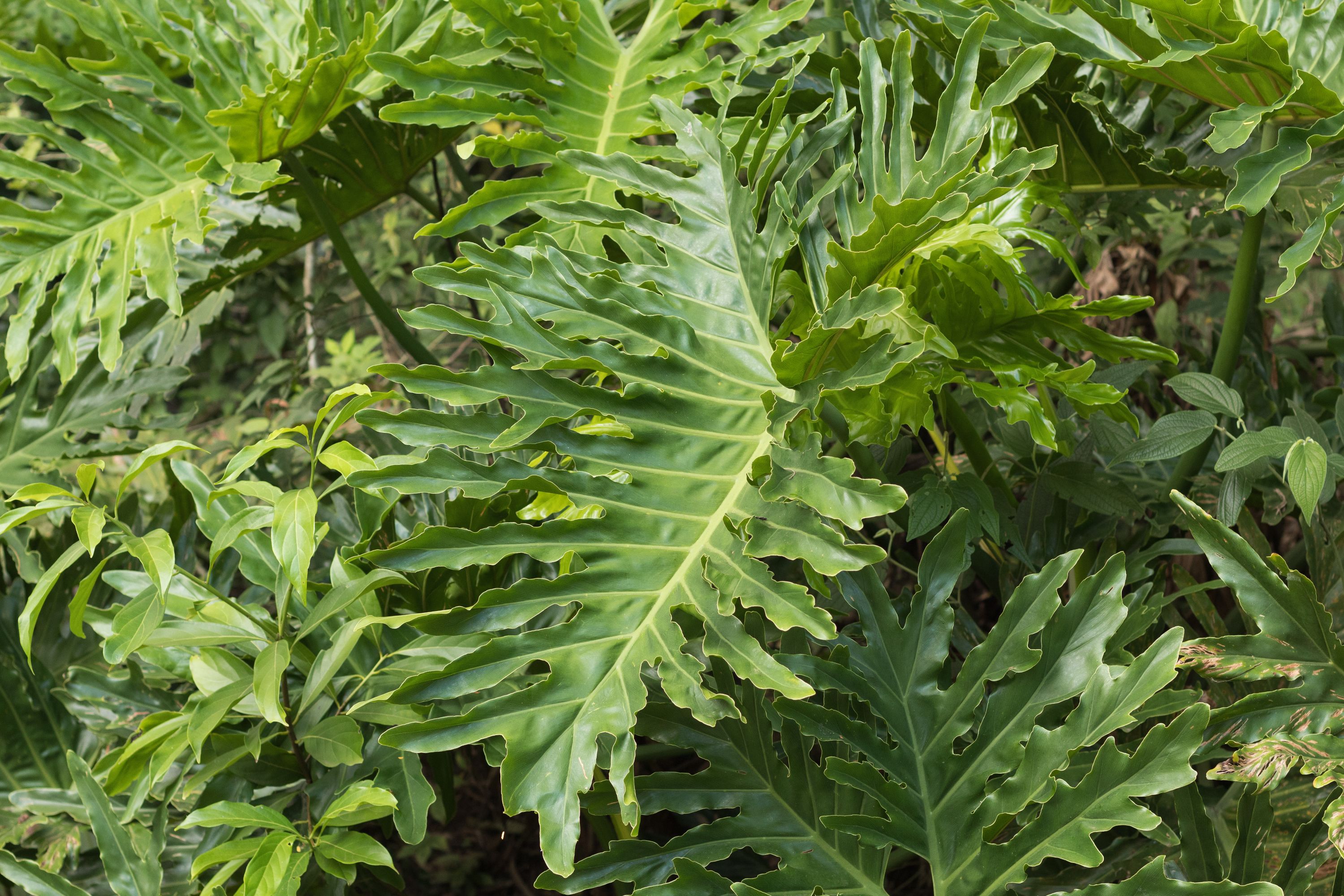Tree philodendron
(Philodendron bipinnatifidum)

Description
Philodendron bipinnatifidum, also known as the tree philodendron or the selloum philodendron, is a popular ornamental plant that belongs to the family Araceae. Native to South America, this tropical plant is widely cultivated in gardens and homes around the world for its attractive foliage, easy maintenance, and air-purifying properties. In this article, we will delve deeper into the characteristics, care requirements, propagation, and common issues of Philodendron bipinnatifidum. Botanical Description Philodendron bipinnatifidum is a robust evergreen shrub that can grow up to 15 feet (4.6 m) tall and 8 feet (2.4 m) wide in ideal conditions. Its stem is thick and woody, and it is covered with a scaly sheath called the petiole. The leaves are large, lobed, and deeply dissected, with a glossy green surface that can measure up to 3 feet (0.9 m) in length and 2 feet (0.6 m) in width. The plant also produces spathe and spadix inflorescences that are typical of the Araceae family, but these are not ornamental and are often removed to redirect the plant's energy to foliage growth. Cultivation Requirements Philodendron bipinnatifidum is a tropical plant that thrives in warm and humid environments. It prefers a well-draining soil that is rich in organic matter, and it can grow both in full sun or partial shade. However, too much direct sunlight can scorch its leaves, while too little light can cause stunted growth and leaf yellowing. The plant also requires regular watering, especially during the growing season (spring to fall), but it is important not to overwater as it can lead to root rot. Additionally, Philodendron bipinnatifidum benefits from regular fertilization with a balanced fertilizer, as well as occasional pruning to remove dead or damaged foliage. Propagation Philodendron bipinnatifidum can be propagated by various methods, including stem cuttings, division, and tissue culture. Stem cuttings are the most popular method and involve taking a 6-8 inch (15-20 cm) cutting from the stem, removing the lower leaves, and placing it in a pot filled with a well-draining soil mix. The cutting should be kept in a warm and humid environment, with regular watering and misting, until roots develop and new growth emerges. Division involves separating the plant into smaller sections, each with a portion of the stem and root system, and planting them individually. Tissue culture is a more advanced technique that involves growing new plants from a small piece of tissue in a laboratory setting. Common Issues Philodendron bipinnatifidum is generally a hardy and disease-resistant plant, but it can suffer from a few common issues. Overwatering can cause root rot, which is characterized by yellowing and wilting of the leaves, and mushy or discolored roots. Underwatering can cause leaf drooping and browning, as well as slowed growth. Pests such as spider mites, mealybugs, and scale insects can also infest the plant, causing leaf damage and discoloration. These can be treated with insecticidal soap or neem oil, but it is important to follow the manufacturer's instructions carefully. Conclusion Philodendron bipinnatifidum is a beautiful and easy-to-grow plant that can add a tropical touch to any indoor or outdoor space. With the right care and maintenance, it can thrive and produce stunning foliage for years to come.
Taxonomic tree:







